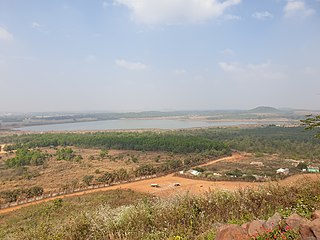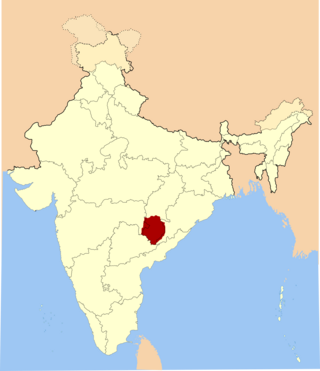Related Research Articles

The Indo-Aryan languages are a branch of the Indo-Iranian languages in the Indo-European language family. As of the early 21st century, they have more than 800 million speakers, primarily concentrated in Bangladesh, India, Pakistan, Sri Lanka, Maldives and Nepal. Moreover, apart from the Indian subcontinent, large immigrant and expatriate Indo-Aryan–speaking communities live in Northwestern Europe, Western Asia, North America, the Caribbean, Southeast Africa, Polynesia and Australia, along with several million speakers of Romani languages primarily concentrated in Southeastern Europe. There are over 200 known Indo-Aryan languages.

Odia is an Indo-Aryan classical language spoken in the Indian state of Odisha. It is the official language in Odisha, where native speakers make up 82% of the population, and it is also spoken in parts of West Bengal, Jharkhand, Andhra Pradesh and Chhattisgarh. Odia is one of the many official languages of India; it is the official language of Odisha and the second official language of Jharkhand.

Saraiki is an Indo-Aryan language of the Lahnda group, spoken by 26 million people primarily in the south-western half of the province of Punjab in Pakistan. It was previously known as Multani, after its main dialect.

The voiced retroflex plosive or stop is a type of consonantal sound, used in some spoken languages. The symbol in the International Phonetic Alphabet that represents this sound is ⟨ɖ ⟩, and the equivalent X-SAMPA symbol is d`. Like all the retroflex consonants, the IPA symbol is formed by adding a rightward-pointing hook extending from the bottom of a d, the letter that is used for the corresponding alveolar consonant. Many South Asian languages, such as Hindi and Urdu, have a two-way contrast between plain and murmured.
The Odia script is a Brahmic script used to write primarily Odia language and others including Sanskrit and other regional languages. It is one of the official scripts of the Indian Republic. The script has developed over more than 1000 years from a variant of Siddhaṃ script which was used in Eastern India, where the characteristic top line transformed into a distinct round umbrella shape due to the influence of palm leaf manuscripts and also being influenced by the neighbouring scripts from the Western and Southern regions.

Koraput district is a district of India in southern Odisha, with headquarters at Koraput. The district is located in the Eastern Ghats and is known for its hilly terrain, rich and diverse types of mineral deposits and its tribal culture and traditions. The district headquarters town of Koraput and its largest city, Jeypore are major centres of trade and commerce for South Odisha and fall on an important road connecting Visakhapatnam to Raipur.

The voiced retroflex lateral flap is a type of consonantal sound, used in some spoken languages. The 'implicit' symbol in the International Phonetic Alphabet is ⟨𝼈 ⟩. The sound may also be transcribed as a short ⟨ɭ̆ ⟩, or with the retired IPA dot diacritic, ⟨ɺ̣⟩.

Nabarangpur district, also known as Nabarangapur district or Nawarangpur district, is a district of Odisha, India. The city of Nabarangpur is the district capital. Most of its population is tribal and the land is heavily forested. It borders Kalahandi and Koraput districts. Nabarangpur district is situated at 19.14′ latitude and 82.32′ longitude at an average elevation of 572 metres (1,877 ft).

Halbi is an Eastern Indo-Aryan language, transitional between Odia and Marathi. It is spoken by at least 766,297 people across the central part of India.
The Gujarati language is an Indo-Aryan language native to the Indian state of Gujarat. Much of its phonology is derived from Sanskrit.
The phoneme inventory of the Marathi language is similar to that of many other Indo-Aryan languages. An IPA chart of all contrastive sounds in Marathi is provided below.
Hindustani is the lingua franca of northern India and Pakistan, and through its two standardized registers, Hindi and Urdu, a co-official language of India and co-official and national language of Pakistan respectively. Phonological differences between the two standards are minimal.
The Gtaʼ language, also known as Gta Asa, Didei or Didayi, is an Austroasiatic language spoken by the Didayi people of southernmost Odisha in India.
Mundari (Munɖari) is a Munda language of the Austroasiatic language family spoken by the Munda tribes in eastern Indian states of Jharkhand, Odisha and West Bengal and northern Rangpur Division of Bangladesh. It is closely related to Santali. Mundari Bani, a script specifically to write Mundari, was invented by Rohidas Singh Nag. It has also been written in the Devanagari, Odia, Bengali, and Latin writing systems.
Odia grammar is the study of the morphological and syntactic structures, word order, case inflections, verb conjugation and other grammatical structures of Odia, an Indo-Aryan language spoken in South Asia.

Sambalpuri is an Indo-Aryan language variety spoken in western Odisha, India. It is alternatively known as Western Odia, and as Kosali, a recently popularised but controversial term, which draws on an association with the historical region of Dakshina Kosala, whose territories also included the present-day Sambalpur region.

The Eastern Indo-Aryan languages, also known as Māgadhan languages, are spoken throughout the eastern region of the subcontinent, which includes Bihar, Uttar Pradesh, Jharkhand, Bengal region, Tripura, Assam, and Odisha; alongside other regions surrounding the northeastern Himalayan corridor. Bengali is official language of Bangladesh and the state of West Bengal, Tripura and the Barak valley of Assam while Assamese and Odia are the official languages of Assam and Odisha, respectively. The Eastern Indo-Aryan languages descend from Abahattha, which descends from Magadhan Apabhraṃśa and ultimately from Magadhi Prakrit.

Baleswari Odia, also Northern Odia or North Balasore Odia, is a dialect of Odia spoken in the northern regions of Indian state of Odisha. It is spoken in the districts of Balasore, Bhadrak, Mayurbhanj and Kendujhar.

Swayamsiddha is a 2010 Odia film directed by Sudhanshu Sahu with a screenplay and dialogue by Dilip Choudhury, produced by Prabhat Ranjan Mallik, and starring Siddhanta Mahapatra and Yukta Inderlal Mookhey. The film focuses on the implications for the young mass adopting to Maoist insurgency and their sustained alienation from the mainstream as a result. Geo-strategic importance of changing the minds of young people adopting terrorism through love and affection. The film traces the crisis from social trauma to unfair state system encouraging Mao-Naxal insurgency in Odisha.
Bhatri is an Eastern Indo-Aryan language spoken by the Bhottada tribe in Chhattisgarh and Odisha, India. The language is spoken predominantly in eastern Bastar district and in Koraput and Nabarangpur districts of Odisha.
References
- ↑ Masica (1991:426)
- ↑ "Desiya", in Eberhard, David M., Gary F. Simons, and Charles D. Fennig, eds. (2020). Ethnologue: Languages of the World. Twenty-third edition. Dallas, Texas: SIL International.
- ↑ Gustafsson, Uwe (1978). "Procedural discourse in Kotia Oriya". In Joseph E. Grimes (ed.), Papers on discourse, 283-97. Dallas: Summer Institute of Linguistics.
- ↑ Mohan, Shriya (January 10, 2018). "Speak up, India". The Hindu.
- ↑ Vishnu, Uma (May 15, 2016). "This way to school: How dismal indicators for education in Odisha's Nabarangpur are slowly changing". The Indian Express.
- ↑ "Census of India : Linguistic survey of India Orissa".
- ↑ Mahapatra, B.P. (2002). Linguistic Survey of India: Orissa (PDF). Kolkata, India: Language Division, Office of the Registrar General. p. 2. Retrieved 5 August 2020.
- ↑ Mahapatra, B.P. (2002). Linguistic Survey of India: Orissa (PDF). Kolkata, India: Language Division, Office of the Registrar General. p. 20. Retrieved 5 August 2020.
- ↑ Mahapatra, B.P. (2002). Linguistic Survey of India: Orissa (PDF). Kolkata, India: Language Division, Office of the Registrar General. p. 94,95. Retrieved 5 August 2020.
- ↑ Tripathī, Kunjabihari (1962). The Evolution of Oriya Language and Script. Utkal University. Retrieved 21 March 2021.